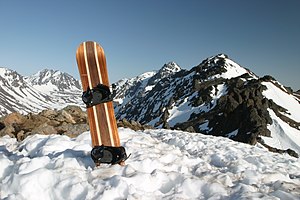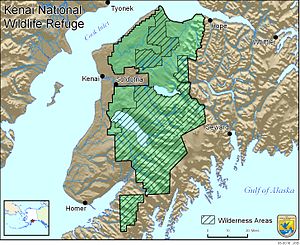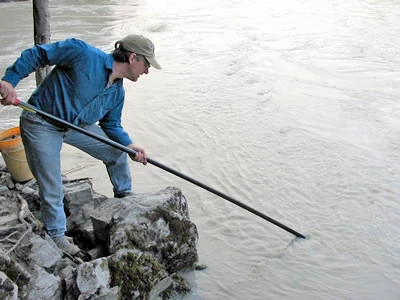OK, we’re all Alaskans and we seem to love a good political fight. We really like to fight about fish. So grab the popcorn for the next round. If you’re following this, then you’ve seen half a dozen editorials, letters to the editor and stories over my nomination to the Alaska Board of Fisheries, all written by someone else. Most recently from an out-of-state individual paid to advance one group’s vision. With a couple days to go before the Legislature makes a decision, you need to hear from the applicant himself.
My name is Robert Ruffner. I’m a married, dedicated father of two young daughters and a proud dipnetter from the Kenai who can’t think of any better way to get fish onto the average Alaskans’ table. Every sockeye in my freezer and in jars on our shelf came from a dipnet. I harvest near my family’s limit and we eat every one. I will support and defend access to these fish and work very hard to improve the access of this fishery to ensure its continued success. What is needed moving forward is a better understanding and appreciation of these fisheries importance to the average Alaskan and recognition that each has unique challenges.
Read More
Showing posts with label Kenai Peninsula. Show all posts
Showing posts with label Kenai Peninsula. Show all posts
Thursday, April 23, 2015
Thursday, March 13, 2014
TOUGH TIMES FOR KENAI RIVER GUIDES
| Kenai River (Photo credit: Wikipedia) |
Bruce Ewitt guided on the Kenai River for 11 years before he quit after the 2012 fishing season and shifted his efforts toward king salmon returning to the Columbia River.
He joined the ranks of sportfishing guides, nearly 100 since 2007, who have stopped guiding on the Kenai River a trend that other guides say could be indicative of future river use.
READ MORE

Saturday, November 30, 2013
Avalanche Awareness Education Month Is The Time To Prepare
Local Forecast Center Chugach National Forest Avalanche Information Center and Alaska Avalanche School Gearing Up This Weekend
November is Avalanche Awareness Education month in Alaska, and with a large weather system reaching Southcentral Alaska today, both the region's forecast center, Chugach National Forest Avalanche Information Center (CNFAIC), and the Alaska Avalanche school are finalizing preparations for the year ahead.
 |
| Peak Three, near Anchorage, Alaska (Photo credit: Wikipedia) |
"We've seen a major increase in backcountry users in the Chugach National Forest during recent years," said Wendy Wagner, avalanche forecaster with the CNFAIC. "Starting today, we will be issuing daily avalanche advisories which will continue through April."
This resource is available to the public online at www.cnfaic.org, providing information for backcountry travelers in two heavily traveled areas on the Kenai Peninsula, chiefly Turnagain Pass.
Reviewing an avalanche advisory before venturing into avalanche terrain is the smart thing to do, and it is a practice taught to each student who takes courses at the Alaska Avalanche School.
"We want our students to be prepared to make the best possible decisions in the field," said Aleph Johnston-Bloom, Executive Director of the Alaska Avalanche School. "Fortunately we've got some great resources in our area, like the Chugach National Forest Avalanche Information Center."
Despite the late arrival of snow, interest in avalanche education has been high this fall. December courses offered by the Alaska Avalanche School are nearly full, with new students registering daily. Courses begin in two weeks.
Weekend Media Opportunities:
CNFAIC forecasters will be at the Glacier Ranger District in Girdwood and out in the field in the Turnagain Pass area this weekend assessing snow and avalanche conditions. To set up an interview, call Wendy Wagner at 435-640-6508.
The Alaska Avalanche School is conducting it's instructor training this weekend. Interviews/filming opportunities are available throughout the day on Saturday in Anchorage, when course curriculum will be reviewed in a classroom setting.
On Sunday, media is invited during select times when the school's field training session takes place at Hatchers Pass. For more information, or to set up a time, contact AAS Executive Director Aleph Johnston-Bloom at 907-345-0878.
About The Center/School:
The Chugach National Forest Avalanche Center is a public safety service housed under the U.S. Forest Service whose mission is to increase avalanche awareness in the Turnagain area though advisories and public education.
Alaska Avalanche School is a 501c3 organization with a mission to provide exceptional experienced-based snow and avalanche education to all users of the mountain environment. The school has been around over 35 years, recently teaching 1200 students per season.
For more Information:
Wendy Wagner, Avalanche Forecaster, Chugach National Forest Avalanche Center 435-640-6508 or wendy@chugachavalanch.org
Aleph Johnston-Bloom, Executive Director, Alaska Avalanche School 907-345-0878 or alaskaavalanche@mac.com
Wendy Wagner
Chugach National Forest Avalanche Information Center
www.cnfaic.org
Chugach National Forest Avalanche Information Center
www.cnfaic.org
wendy@chugachavalanche.org
(435) 640-6508
(435) 640-6508
PO Box 129
Girdwood, AK 99587
Girdwood, AK 99587

Sunday, February 10, 2013
Results of Kenai Brown Bear Population Study Released
 |
A study conducted by the U.S. Fish and Wildlife Service and the U.S. Forest Service has produced the first estimate of brown bear population size on the Kenai Peninsula using local field data. Conducted in June 2010 on the Kenai National Wildlife Refuge and the Chugach National Forest, the study concluded that the best estimate is 624 brown bears. Prior to the study, land and wildlife managers lacked information on the number of bears in the area.
Scientists arrived at the final estimate for the Peninsula through two steps. First, they used field methods and DNA analysis to sample the brown bear population on a well defined study area that included 70% of the Peninsula’s available brown bear habitat. This yielded an estimate of 428 brown bears (with a 95% confidence interval of 353 – 539 bears) on the 2.9 million-acre study area. The scientists then used the best estimate of brown bears on the study area and expanded it to available bear habitat on the entire Peninsula, producing the estimated total of 624 bears.
Federal and State resource managers on the Kenai Peninsula have long recognized the importance of developing a population estimate to guide brown bear management. Terri Marceron, Forest Supervisor on the Chugach National Forest noted that the investigation was both valuable and timely. “Brown bears serve important functions in ecosystems on the Peninsula, and are highly valued by residents and visitors.” She added, “As we initiate Forest Plan Revision in February, our first phase will be sharing status and trend information on various resources, including this new data on brown bears.”
The study used a methodology called mark-recapture, which relied on identifying individual bears through analysis of DNA extracted from hair samples collected on a grid across the study area. Hair samples were obtained by attracting bears to barbed-wire enclosures, each of which surrounded a scented lure. The accuracy of the population estimate was improved using information from radio-collared bears known to frequent the study area; which was made available through independent studies being conducted by the Alaska Department of Fish and Game.
The estimate includes both cubs and adult bears. Using information on the average litter size of cubs accompanying radio-collared female bears on the study area and the overall sex ratio determined from this study, the estimate of 624 bears translates into approximately 200 adult female, 200 adult male, and 224 cubs.
Results of the study are detailed in the report The Kenai Brown Bear Population on Kenai National Wildlife Refuge and Chugach National Forest. The study’s lead scientists, Dr. John Morton, supervisory wildlife biologist at the Kenai National Wildlife Refuge; Martin Bray, a Chugach National Forest wildlife biologist; and Dr. Greg Hayward, wildlife ecologist for the U.S. Forest Service’s Alaska Region, were assisted by two experts in their respective fields. Dr. David Paetkau, who conducted the DNA analysis, heads Wildlife Genetics International, a renowned wildlife genetics laboratory in Nelson, British Columbia. Dr. Gary White, professor emeritus at Colorado State University, conducted the data analyses which generated the population estimate. Dr. White is one of the world’s leading experts on wildlife population estimation using mark-recapture methodology.
Andy Loranger, Refuge Manager of the Kenai National Wildlife Refuge, described the importance of the study’s results. “Kenai brown bears are a highly valued wildlife resource. Enumerating bears in heavily forested habitats like those on the Kenai and over large areas encompassing millions of acres is extremely challenging. This estimate of the Kenai brown bear population is an important piece of scientific information that will help inform land and resource management decisions and benefit the long-term conservation of this iconic wildlife species.”

Friday, November 25, 2011
Cutting your own Christmas tree
 |
| Image via Wikipedia |
Get A Fresh Spruce, have a happy holiday...
It's that time of year when families are venturing out through the snow and into the woods to search for that perfect Christmas tree. The Chugach National Forest has just the place to find that magical tree free of charge, if you follow some straightforward guidelines:
- All areas of the Chugach National Forest on the Kenai Peninsula are open, with the exceptions of Portage Valley and Turnagain Pass. The Portage closure* extends from the Seward Highway to Portage Lake. The Turnagain Pass closure* extends from just north of the Turnagain Pass Rest Area (at MP 57 from Anchorage; MP 70 from Seward) to the Bertha Creek Campground (MP 61.5 from Anchorage; MP 65.5 from Seward).
- Each household or organization is allowed one tree from the Forest. No permits are required to cut trees for personal use. However, permits are required to cut trees for commercial purposes. The free trees cannot be sold, bartered or used in any commercial-type exchange for goods.
- Be certain you are on land managed by the Forest Service.
- Cut trees at least 150 yards (450 feet) away from main roads, picnic and campground units, administrative facilities, trails, and bodies of water.
- Do not fell trees into streams or other bodies of water. Cut trees as close to the ground as possible.
- Do not lop off the tops of trees higher than 20 feet in order to get the good parts.
- Follow off-road zoning regulations. Select your tree thoughtfully, to avoid unsightly bare spots.
To receive further information contact one of our offices:
- Anchorage office at (907) 743-9500
- Seward District office at (907) 224-3374
- Glacier District office at (907) 783-3242.
Related articles
- Eastern Kenai Peninsula slash pile burning (alaska-outdoors.blogspot.com)

Sunday, September 11, 2011
Eastern Kenai Peninsula slash pile burning
 Image via Wikipedia
Image via Wikipedia
The Chugach National Forest-Seward Ranger District will begin burning slash piles on the Eastern Kenai Peninsula starting September 12, 2011. Burning may continue through May 31, 2012, as weather conditions permit.
The burning is part of a Peninsula-wide effort to reduce hazard fuel loads as a result of the spruce bark beetle epidemic that hit the region in the past decade. Prior to pile ignition, Forest Service personnel will work with Alaska Department of Environmental Conservation and National Weather Service to assess weather patterns and conditions to ensure efficient smoke dispersal. There may be some residual smoke in the mornings or late evenings during inversion events around the Kenai Lake and on the Turnagain/Hope Hwy, Seward Hwy/ and Sterling Hwy.
If you have any questions or comments, please contact Nicole Longfellow (907) 288-7734 or Dave Lockwood (907) 288-7732.

Subscribe to:
Posts (Atom)

